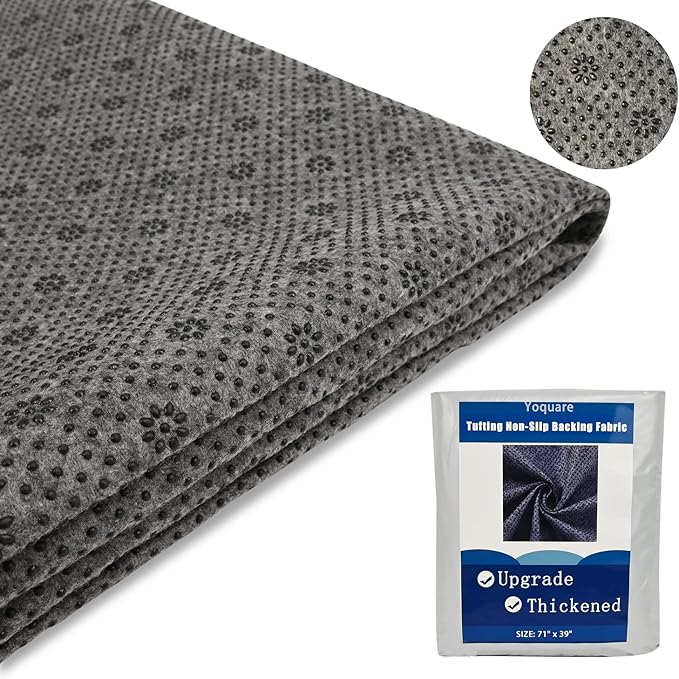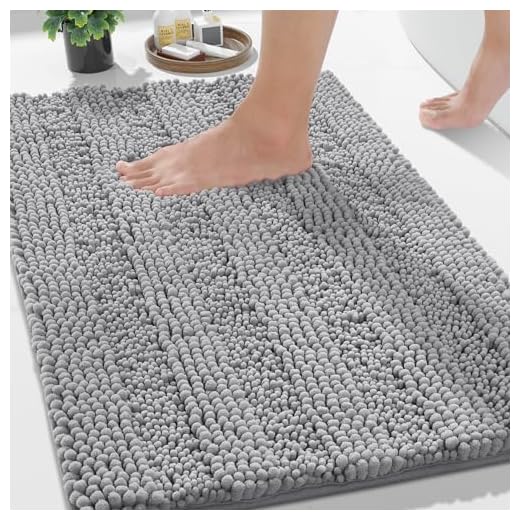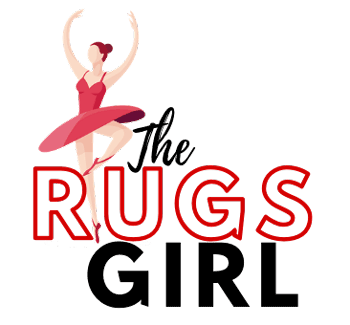What Does Latex Backing on a Rug Look Like?
What Does Latex Backing on a Rug Look Like is a question that most people have to answer as they look for an ideal rug
If you are looking for a rug to add some style and comfort to your home, you might be wondering what kind of backing it has. The backing is the material that is attached to the bottom of the rug to provide stability, durability, and protection for the rug and the floor. There are different types of rugs backing, and one of them is latex backing. But what does latex backing on a rug look like, and what are its advantages and disadvantages?
Types of Rugs Backing
Heat-set backing

This is a type of backing that is applied to a rug through a high heat process.
It allows the rug to breathe properly and prevents mildew and mold growth. It is often used for machine-made wool rugs.




![Maples Rugs Reggie Floral Kitchen Rugs Non Skid Accent Area Carpet [Made in USA], Multi, 2'6 x 3'10](https://m.media-amazon.com/images/I/516HjjW-5qL._SS520_.jpg)

Woven backing
This is a type of backing that is made of the same material as the rug fibers, such as olefin or polypropylene. It is usually not covered with any other material, so you can see the weave pattern on the back of the rug. It is durable and easy to clean, but it can also damage some floors, especially hardwood floors.
Felt backing
This is a type of backing that is made of felt or other fabrics that are either glued or sewn to the rug. It provides some cushioning and air flow, and it is regularly made of natural fibers that are environmentally friendly. However, it can also attract dust and dirt, and it may not be very stable or slip-resistant.
Latex backing
This is a type of backing that is made of natural or synthetic rubber that is either baked on or left to air dry. It covers the entire back of the rug and creates a non-skid surface. It is typically used for bathroom rugs and throw rugs.




What Is Latex Backing on Rugs?
Latex backing on rugs is a type of rubber coating that is applied to the back of the rug to prevent it from slipping or sliding on the floor. It can be made of natural latex, which comes from rubber tree sap, or synthetic latex, which is derived from petroleum or other chemicals. The latex backing on rugs looks like a smooth or textured layer of rubber that covers the entire back of the rug. It can be white, beige, gray, or black in color, depending on the type and quality of the latex.
Also, Read…
- How to Keep Dogs from Peeing on Rugs?
- Best Rugs for Dog Owners Buying Guide
- Best Rugs for Dogs That Pee
- The Best Entryway Rugs for High Traffic Areas
- The Best Entryway Rugs for Hardwood Floors
Is Latex Backing on Rugs Toxic?
Latex backing on rugs can have some benefits, such as providing stability, durability, and protection for the rug and the floor. However, it can also have some drawbacks, such as being toxic or harmful for some people and environments.
Allergic reactions
Some people may be allergic to natural or synthetic latex, which can cause skin irritation, rashes, hives, itching, swelling or breathing difficulties when they come in contact with latex-backed rugs. If you have a latex allergy, you should avoid using latex-backed rugs or wear gloves when handling them.
Chemical emissions
Some synthetic latex may contain volatile organic compounds (VOCs), which are chemicals that can evaporate into the air and cause indoor air pollution. VOCs can have negative effects on human health, such as headaches, nausea, dizziness, eye irritation or respiratory problems. If you use synthetic latex-backed rugs, you should ventilate your room well and avoid placing them in areas where you spend a lot of time.
Floor damage
Some latex-backed rugs may damage certain types of floors, especially hardwood floors. Latex can attract moisture and trap it between the rug and the floor, which can cause discoloration, warping, cracking or mold growth on the floor. If you use latex-backed rugs on hardwood floors, you should place a rug pad underneath them to protect your floor from damage.




![Maples Rugs Reggie Floral Kitchen Rugs Non Skid Accent Area Carpet [Made in USA], Multi, 2'6 x 3'10](https://m.media-amazon.com/images/I/516HjjW-5qL._SS520_.jpg)

FAQs
How do you fix a rubber back rug?
If your rubber back rug has become worn out, cracked or peeling, you can try to fix it by applying some fabric glue or spray adhesive to the back of the rug. Then press it firmly onto a new piece of rubber sheeting. You can then cut off any excess rubber around the edges of the rug with scissors.
Can you replace the backing on a rug?
If your rug backing is beyond repair, you can replace it by removing the old backing with a utility knife or scissors and attaching a new backing of your choice with fabric glue, spray adhesive or stitching. You can use any type of backing that suits your needs and preferences, such as heat-set, woven, felt or latex.
Can you use Flex Seal on back of rugs?
Flex Seal is a liquid rubber coating that can be used to seal leaks, cracks, or holes on various surfaces. You can use Flex Seal on the back of rugs to create a waterproof and slip-resistant layer. However, you should be careful not to apply too much Flex Seal. You should also test a small area to make sure it does not damage or discolor your rug.
What is the rubber backing on a rug called?
The rubber backing on a rug is called latex backing. It is a type of rubber coating that is applied to the back of the rug to prevent it from slipping or sliding on the floor. It can be made of natural or synthetic latex.
What does no backing on a rug mean?
No backing on a rug means that the rug does not have any material attached to the bottom for stability. No backing rugs are usually hand-knotted or hand-woven rugs that have a natural and organic look and feel. They are also more flexible and lightweight than backed rugs. However, they may also be more prone to shedding, curling or slipping.
How to put rubber backing on a rug?
You will need some rubber sheeting, fabric glue or spray adhesive, scissors and a utility knife. Here are the steps to follow:
- Lay your rug flat on the floor and measure its dimensions.
- Cut a piece of rubber sheeting that is slightly larger than your rug with scissors.
- Apply some fabric glue or spray adhesive to the back of your rug and press it firmly onto the rubber sheeting.
- Cut off any excess rubber around the edges of your rug with a utility knife.
What is tpr backing on rugs?
TPR backing is a type of thermoplastic applied to the back of some rugs to provide stability, durability, and protection. TPR backing is similar to latex backing, but it is more resistant to heat, abrasion, and chemicals. It is also more environmentally friendly than synthetic latex, as it does not contain VOCs or phthalates.
Final Thought
Rug backing is an important factor to consider when choosing a rug for your home. Latex backing on rugs is one of the common types of rugs backing that you might encounter. It looks like a smooth or textured layer of rubber that covers the entire back of the rug. It has some advantages, such as providing stability, durability, and protection for the rug and the floor. However, it also has some disadvantages, such as being toxic or harmful for some people and environments. Therefore, you should weigh the pros and cons of latex backing on rugs before buying one.
![Maples Rugs Rebecca Contemporary Kitchen Rugs Non Skid Accent Area Carpet [Made in USA], 2'6 x 3'10, Café Brown/White](https://m.media-amazon.com/images/I/516pgzdwwhS._SS520_.jpg)



![Maples Rugs Vivian Medallion Kitchen Rugs Non Skid Accent Area Carpet [Made in USA], 2'6 x 3'10, Grey](https://m.media-amazon.com/images/I/61V73IkJqLL._SS520_.jpg)

![Maples Rugs Pelham Vintage Kitchen Rugs Non Skid Accent Area Carpet [Made in USA], 2'6 x 3'10, Khaki, Model:AG4055401](https://m.media-amazon.com/images/I/51ITmwQUMbL._SS520_.jpg)
![Maples Rugs Distressed Tapestry Vintage Non Slip Runner Rug for Hallway Entry Way Floor Carpet [Made in USA], 2 x 6, Neutral](https://m.media-amazon.com/images/I/41CEWVp93+L._SS520_.jpg)









